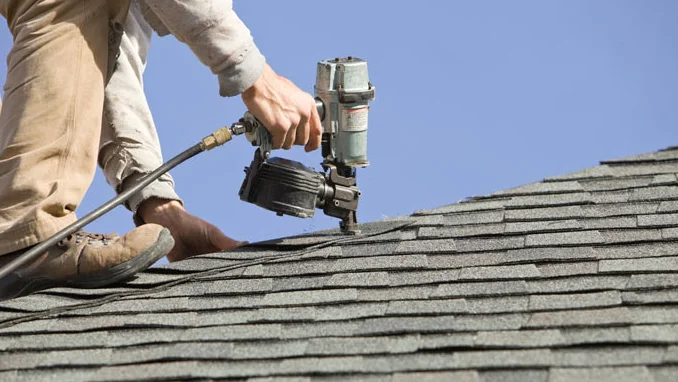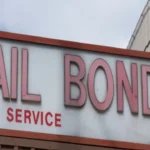Understanding what happens during a roof inspection can help homeowners prepare for the process and effectively address any concerns. A thorough inspection ensures potential issues are identified and resolved before they escalate. This process is essential whether you’re preparing for a new roof installation or simply maintaining your current roof. We will explore the key components of a roof inspection, what OnPoint Roofing near Houston look for, and why these checks are vital for the longevity and safety of your home.
Initial Assessment: Setting the Stage for Inspection
The inspection process begins with an initial assessment of the roof’s overall condition. This involves an exterior examination, during which the team evaluates the visible state of the roof from ground level and adjacent vantage points. They look for wear, damage, or deterioration that might require closer inspection. This phase is crucial because it helps identify immediate red flags, such as missing shingles, sagging areas, or signs of water damage.
Inspectors also consider factors like the roof’s age, previous maintenance records, and exposure to environmental elements like wind, rain, or snow. Reviewing these aspects gives them a clear picture of what to expect before conducting a more detailed inspection. This stage allows homeowners to share their concerns or point out specific areas needing attention.
Structural Integrity Check: Ensuring a Strong Foundation
The next step involves a thorough evaluation of the roof’s structural integrity. Inspectors assess the underlying framework to ensure it can support the roof’s weight and withstand environmental stresses. This includes checking for sagging or uneven areas which indicate compromised structural components.
During this phase, inspectors might examine the attic for moisture, mold, or rot signs. These issues can weaken the roof structure and lead to costly repairs if left unaddressed. Inspectors also check the alignment of rafters and trusses to ensure they properly support the roof’s weight.
Structural inspections often uncover hidden issues that may not be visible from the exterior. By addressing these problems early, homeowners can avoid more significant damage and expenses in the future. This inspection stage provides valuable insights into the roof’s overall health and helps determine the best course of action for repairs or replacement.
Material Inspection: Checking for Wear and Tear
Inspectors closely examine the materials used on the roof to assess their condition and performance. This involves checking for cracks, curling, or missing shingles for shingle roofs. Inspectors look for signs of rust, dents, or loose panels for metal roofs. These material-specific checks are essential for identifying vulnerabilities that could lead to leaks or other damage.
This phase also includes inspecting the flashing around chimneys, vents, and skylights. Flashing is a critical component that prevents water from seeping into the home at vulnerable points. Any gaps, cracks, or misalignment in the flashing can compromise the roof’s waterproofing capabilities.
Inspectors may also evaluate the condition of gutters and downspouts as part of the material inspection. Properly functioning drainage systems prevent water buildup on the roof and reduce the risk of leaks. By ensuring that all materials are in good condition, inspectors help homeowners maintain a durable and reliable roof.
Ventilation and Insulation Review: Enhancing Energy Efficiency
Proper ventilation and insulation are key to maintaining a healthy and efficient roofing system. During the inspection, the team evaluates the attic’s ventilation system to ensure adequate airflow. Poor ventilation can lead to moisture buildup, damage the roof, and contribute to mold growth.
Inspectors also assess the quality and condition of insulation in the attic. Insufficient insulation can result in energy loss, higher utility bills, and reduced comfort levels in the home. By identifying gaps or areas where insulation needs improvement, inspectors help homeowners make their properties more energy-efficient.
Addressing ventilation and insulation issues during a roof inspection can extend the roof’s lifespan. Proper airflow and temperature regulation reduces the risk of ice dams, condensation, and other problems that can accelerate wear and tear.
Leak Detection: Addressing Hidden Vulnerabilities
One of the most critical aspects of a roof inspection is identifying potential leaks or areas where water may enter the home. Inspectors carefully examine the roof for signs of water damage, such as stains, discoloration, or soft spots. They also check the interior ceilings and walls for indications of leaks that may have gone unnoticed.
Leak detection often involves using tools like moisture meters or infrared cameras to identify hidden issues. These devices help inspectors pinpoint areas of concern without invasive procedures. By addressing leaks early, homeowners can prevent water damage from spreading and causing further harm to the property.
This inspection phase is particularly important for homeowners living in regions with frequent rain or snow. Regular inspections and timely repairs ensure the roof remains watertight and capable of protecting the home from the elements.
A roof inspection is a comprehensive process that evaluates every aspect of the roofing system to ensure its functionality, safety, and durability. From the initial assessment to the final recommendations, this process provides homeowners with valuable insights into the condition of their roofs and the necessary steps to address any issues. We have explored how inspections cover structural integrity, material performance, ventilation, insulation, and leak detection, highlighting the importance of each stage. By understanding what to expect during a roof installation company’s inspection, homeowners can take proactive measures to maintain their roofs and protect their homes effectively.

Shannon Reyes is a seasoned writer with a knack for crafting engaging blogs on a variety of service industries, including plumbing, cleansing, moving, pest control, and roofing. With a keen eye for detail and a passion for helping readers navigate complex topics, Shannon brings her expertise to life through informative and accessible content.










